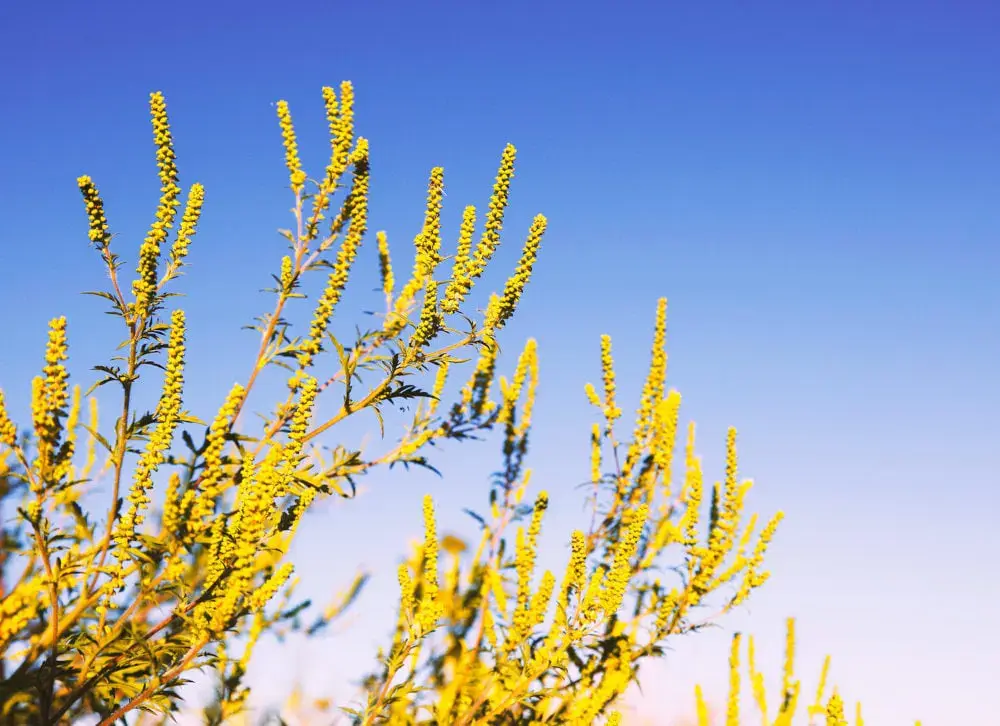You can’t stay away from tree pollen completely, but you can take steps to prevent and manage your symptoms. It’s helpful to know what kinds of trees cause you to have allergy symptoms, so you can take precautions during the times when it’s highest in the air. Some simple steps, like staying indoors when pollen counts are high, can go a long way in reducing exposure to the invisible powdery allergy trigger. And treatment can help make you more comfortable — so you can enjoy the springtime, instead of dreading it.
About Tree Pollen
Most plants, including trees, release pollen naturally as part of their reproductive cycle. The fine, powdery substance travels through wind, on insects, and on animals, and it fertilizes other trees of the same species. The amount of pollen in the air varies depending on the type of tree and time of year. You may be allergic to a particular species, or there might be multiple types triggering your allergies.
What Are the Types of Trees with Pollen?
If you have tree pollen allergies, it helps to know which species are the usual suspects. The most common tree allergies include:
Alder
Alder trees grow in wooded areas throughout North America. They release the most pollen between January and April depending on where you live.1
Ash
Ash trees are found in eastern and southeastern areas of the U.S., usually in areas of full sunlight. People who are sensitive to ash are more likely to be sensitive to the pollen from the closely related olive tree. Ash trees release pollen in the springtime.2
Birch
Birch trees have tall trunks and papery bark. They are widespread across the U.S. and are often found in grassy areas, forests, and yards. People who are allergic to birch pollen are more likely to have a mild food allergy called oral allergy syndrome (OAS). If you have OAS, certain foods including raw fruits, vegetables, seeds, or nuts might cause your mouth or throat to itch or tingle.3
Cedar
Cedar trees and closely related juniper trees release a lot of pollen, especially in the winter months. Cedar fever is another name for it, which can make it sound like a cedar pollen allergy will make your body temperature will go up as it does with an infection. But cedar tree allergy doesn’t actually cause a fever — it just causes allergy symptoms like runny nose and itchy eyes.4
Cottonwood
Cottonwood trees and closely related poplar trees are found throughout North America. They prefer moist soil, and they release pollen in the springtime between March and May.5
Elm
Elm trees are found throughout North America. They release pollen in the winter to spring, depending on where you live.6
Maple
Maple trees are found throughout North America. Box elder is a species of maple that releases pollen in the wind and is a common culprit for allergies. Maple trees release pollen in the winter and spring, depending on the species and where you live.7
Oak
Oak trees of many kinds are found throughout North America. They are particularly heavy pollinators, which causes problems for allergy sufferers. They usually release pollen in the spring.8
Pine
Pine trees are super pollinators, but these trees rarely cause allergic reactions. Their needle-like leaves and distinct scent make them easy to spot. Sometimes you can even see a layer of pine tree pollen sticking to car windows, especially in the spring.9
Willow
Willow trees prefer moist soil, and they grow along rivers. Their pollen is spread by insects instead of wind, so they aren’t usually a cause of seasonal tree pollen allergies.10
When Is Tree Pollen Season?
Springtime is the season for the most tree pollen in the air. Some trees start producing pollen in the late winter, as early as January, and they can keep it up all the way through June. It can vary depending on the species of tree and where you live. Plants start producing pollen when the temperature goes up in the spring — so if milder temperatures come early, allergy season can start early too.11
Symptoms of a Tree Pollen Allergy
Are you a tree pollen allergy sufferer? If so, you know that it can make you feel miserable, especially during certain times of the year.
Common symptoms of tree pollen allergies include:12
Sneezing
Runny nose
Itchy nose
Itchy mouth
Postnasal drip (mucus flowing behind your nose into your throat)
If you have asthma, tree pollen allergies can trigger asthma symptoms like coughing, difficulty breathing, and wheezing.
How To Treat & Prevent Tree Pollen Allergies
Prevention can go a long way when it comes to tree pollen allergies. There’s no way to get away from trees completely, so taking some steps to reduce your exposure can be your best first line of defense. One of the most important things is knowing when tree pollen is most likely to strike. Here are some ways to prevent it from getting the best of you:
If you’ve been outside, wash your clothes and bathe to get the invisible pollen dust off.
Pollen hitches a ride on the wind. Keep track of the wind in your area and avoid the outdoors on the windiest days if you can.
Mask up when you are outside or near trees to make a physical barrier that pollen can’t penetrate. Even goggles can be a good idea to keep your eyes protected.
Furry friends that spend time outdoors may be giving you a dose of pollen in their fur. Bathe your pets and keep them out of your rooms where you spend a lot of time, especially your bedroom.
On laundry day, line drying your clothes or bedding outdoors can be a big pollen magnet. Use a dryer or line dry indoors instead.
Keep tabs on the pollen count in your area so you can take more precautions when the counts are high.
If you haven’t had allergy testing, reach out to your medical provider. Allergy testing can help your doctor identify your allergy triggers and come up with a treatment plan.
Treating tree pollen allergies can go a long way to helping you feel comfortable and get through allergy season. Tips for tree pollen allergy relief include the following:
Nasal irrigation with salt water to flush tree pollen out of your sinuses can help prevent allergy symptoms from starting. It can also loosen thick mucus and secretions in your nasal passages.
Steroid nasal sprays are medicines available over-the-counter or by prescription. These sprays can help reduce inflammation in your sinuses.
Decongestants are medicines that clear the nasal passages when you have a stuffy nose. They shrink blood vessels in sinuses and reduce nasal congestion.
Antihistamines like BENADRYL® can provide relief from tree pollen allergy symptoms such as runny nose, sneezing, itchy or watery eyes, and itching of the nose or throat. For adults and children 6 years and older, look at BENADRYL® Allergy ULTRATABS® Tablets with Diphenhydramine or BENADRYL® Allergy Plus Congestion ULTRATABS® for sinus pressure and nasal congestion relief. For children ages 6 years and older, look at Children’s BENADRYL® Allergy Plus Congestion Medicine for an antihistamine and decongestant combination medicine.
References
Pollen.com. Alder. Accessed from: https://www.pollen.com/research/genus/alnus
Pollenlibrary.com. Ash (Fraxinus). Accessed from: https://www.pollenlibrary.com/Genus/Fraxinus
Allergy and Asthma Foundation of America. Can Birch Trees Trigger Food Allergies? February 2018. Accessed from: https://community.aafa.org/blog/can-birch-trees-trigger-food-allergies
Allergy and Asthma Network. In the Southwest, Cedar Fever Soars In Winter. Accessed from: https://allergyasthmanetwork.org/news/the-southwest-cedar-fever-soars-winter/
Pollenlibrary.com. Cottonwood, Poplar (Populus). Accessed from: https://www.pollenlibrary.com/GENUS/Populus/
Pollenlibary.com. American Elm (Ulmus americana). Accessed from: https://www.pollenlibrary.com/Specie/Ulmus+americana/
Pollenlibrary.com. Box Elder, Ash-Leaf Maple (Acer negundo). Accessed from: https://www.pollenlibrary.com/Specie/Acer+negundo/
Allergy Insider. Oak tree Allergen Facts, Symptoms, and Treatment. Accessed from: https://www.thermofisher.com/allergy/us/en/allergen-fact-sheets.html?allergen=oak-tree
Pollen.com. Pine. Accessed from: https://www.pollen.com/research/genus/pinus
Pollenlibrary.com. Willow (Salix). Accessed from: https://www.pollenlibrary.com/GENUS/Salix/
American College of Allergy, Asthma, and Immunology. Seasonal Allergies. December 28, 2017. Accessed from: https://acaai.org/allergies/allergic-conditions/seasonal-allergies/
Asthma and Allergy Foundation of America. Tree Pollen: Spring’s First Allergy Offender. February 26, 2018. Accessed from: https://community.aafa.org/blog/tree-pollen-spring-s-first-allergy-offender


